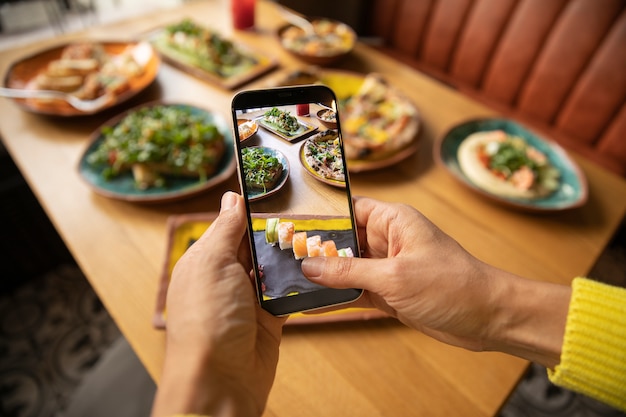In the world of culinary arts, presentation is just as crucial as flavor. The adage “we eat with our eyes first” rings particularly true in the digital age where visual content reigns supreme. Creative food photography is not just about taking appealing pictures of food, it’s about storytelling, creating an ambiance, and evoking emotions that make the viewer’s mouth water. Here are some innovative techniques to enhance your food photography and make your dishes truly stand out.
Use Natural Light to Your Advantage
One of the simplest yet most effective ways to capture the true essence of your dish is by utilizing natural light. Soft, diffused daylight helps in highlighting the texture and color of the food, making it look fresh and appetizing. Position your setup near a window where you can easily manipulate the light with curtains or reflectors. The gentle play of shadows can add depth and dimension to your photographs.

Incorporate Props for Context
Props can be a powerful tool in food photography, adding context and depth to the narrative of your images. Choose props that complement the theme of your dish and enhance the overall mood. Rustic wooden boards, vintage cutlery, and ceramic plates can bring a warm, homey feel, while sleek glassware and modern utensils might suit a more contemporary dish. Remember, the goal is to enhance the food, not overshadow it.
Experiment with Different Angles
Each dish has a unique angle where it looks best. While some dishes look great when shot from above, others might benefit from a side view or a 45-degree angle. Don’t hesitate to move around and try different perspectives to find the one that best highlights the qualities of your dish. Close-up shots can capture the texture and intricacies of food, making the viewer feel as though they could reach out and taste it.
Play with Colors and Textures
The visual appeal of food greatly depends on its color and texture. Use contrasting colors and textures to make your images pop. A vibrant green salad tossed with bright red cherry tomatoes and shiny black olives not only looks appealing but also invites the viewer to dive in. Be mindful of the color wheel and use complementary colors to make your dishes stand out.
Focus on the Freshness
Showcasing the freshness of ingredients can take your food photography to the next level. A sprinkle of fresh herbs or a mist of water can make vegetables and fruits look freshly harvested. The glisten of a freshly cut lemon or the vibrant red of a split chili can convey the freshness and enhance the dish’s appeal.
Create a Story Around Your Dish
Your food photographs should tell a story. Whether it’s a Sunday brunch, a summer barbecue, or a festive dinner, your images should transport the viewer to that scene. Set the table as if guests are about to arrive, or capture a moment of preparation like flour-dusted hands kneading dough. These storytelling elements create a connection between the dish and the viewer.
Read Also : Mastering Food Product Photography: Tips and Techniques
Food Photography Lighting: How to Get the Perfect Shot
Utilize Macro Photography for Detail
Macro photography allows you to focus closely on specific details of the food, which is great for emphasizing texture and ingredients. The crispness of a crust, the bubbling of cheese on a pizza, or the sugar crystals on a frosted cake can all be beautifully captured with a macro lens.
Balance the Composition
A balanced composition is key to creating visually appealing food photographs. Use the rule of thirds to place your main elements strategically. Allow some negative space to let the dish breathe, while also using it to place subtle hints that contribute to the story, such as a fork by the plate or a napkin casually draped.

Edit Subtly but Effectively
Post-processing is a fundamental step in food photography. Adjusting the brightness, contrast, and saturation can help in enhancing the photo without making it look unnatural. Subtle edits that maintain the food’s authentic look while polishing the overall image can make a significant difference in the final output.
Stay Consistent with Your Style
Developing and maintaining a consistent style helps in building a brand around your food photography. Whether it’s the tone, the props, or the type of lighting, consistency will make your work recognizable and appealing to your audience.





